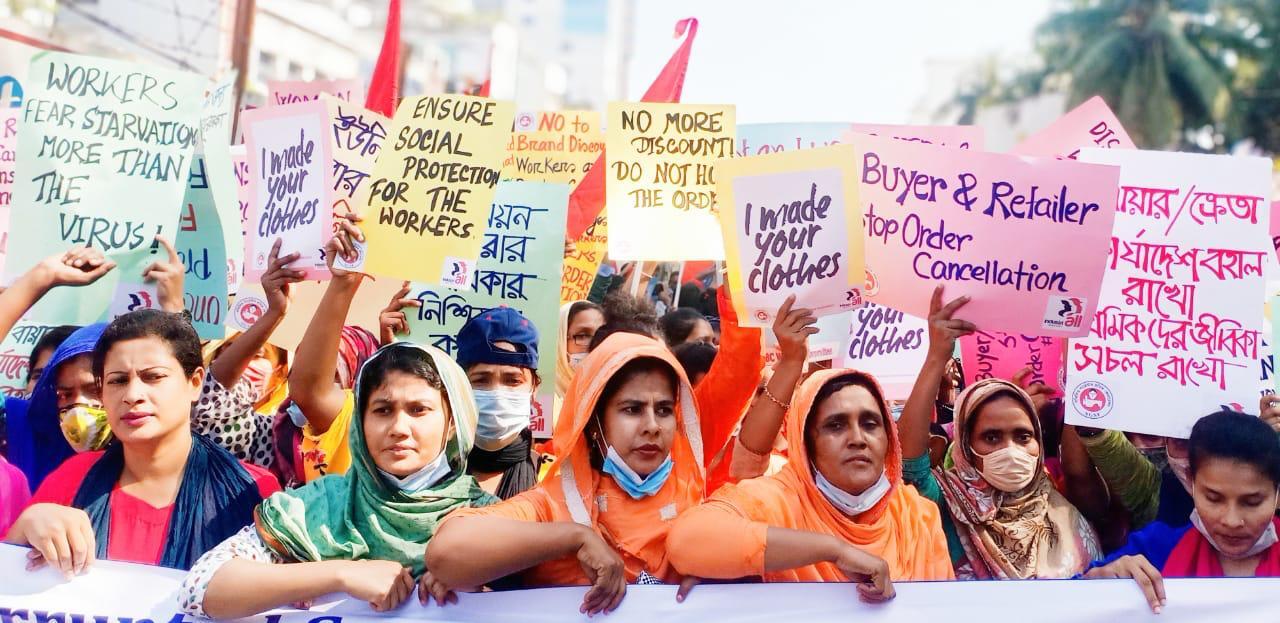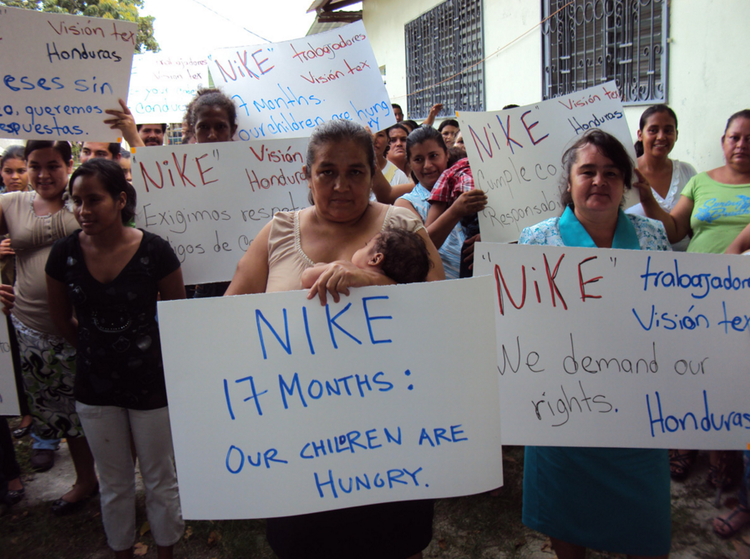Sweatshops: The Real Cost of Clothing

The popularity of fast fashion in first-world countries has given rise to business models relying on cheap labour in developing nations, where underpaid workers are exploited and forced to live and work in inhumane conditions. It makes one question whether inexpensive clothing should really come at the cost of human suffering. In this article, we will dive into the what's, why's and how's of sweatshops, including what we, as consumers, can do to help.
What Are Sweatshops and Why Are We Reliant On Them?
Sweatshops are tiny manufacturing establishments employing underpaid workers under unfair and unhygienic working conditions. The concept of a sweatshop has been around since the mid 19th century, starting with the word sweater being used to describe an employer who exacted monotonous work for very low ages (England, 1850). The term "sweating" eventually spread in the 1880s as immigrants from eastern and southern Europe provided cheap labour in the United States and other parts of Europe. Of course, with the rise of industrialisation in the 20th century, sweatshops emerged in parts of Latin America and Asia as globalisation increased the demand for consumer goods in the West.
Historically, a traditional sweatshop took place in the worker's home and relied on the development of contracting. Simply put, the members of a family would receive a commission for each product done in their own home or a residence converted into a small factory. Contracts determined what job and individual worker or group of workers would carry out along with their wages. This system was very easy to manipulate and put women, children and undocumented workers at risk of being exploited. When market demand was high, workers were forced to work extremely long hours in overcrowded workrooms. However, when market demand was low, factories would typically dismiss workers without consideration in order to cut costs.
Despite efforts to control the rise of sweatshops - including the growth of national labour laws, trade unions, activism and efficiency of machine factory production - their effect only took place in developed countries with the system still operating in many underdeveloped countries in Asia. Manufacturing nations include Bangladesh, China, Indonesia, Vietnam and India, where workers are only paid half to a fifth of what a family needs to survive.
So why do sweatshops still exist today?
Well, the textile industry's main concern is manufacturing clothes as quickly and inexpensively as possible, no matter the human cost. To do so, they find loopholes through which they manipulate others to do their "dirty work" for them. First off, factory owners are put in a difficult position where they have no room to bargain as there is fierce competition in their industry. Essentially, if they cannot produce clothing at a low enough price, the work will be given to another factory. This is why factory owners pay low wages and spend as little money as possible on improving the health and safety of workers.
The clothing industry operates on a subcontracting system, where retailers place orders with brands or manufacturers. These manufacturers then hire contractors, who may further subcontract the work, to produce clothing. The contractors and subcontractors pay the workers who make the garments.
Because retailers and brands do not directly employ the factory workers, they often claim they are not responsible for the poor wages and working conditions. This stance is merely an excuse. Contracts are typically short-term, leaving insufficient time to complete orders. This creates intense pressure on contractors, leading to excessive overtime, poor-quality products, and an increase in workplace accidents.
The situation has worsened due to the global economy. Wealthy, powerful countries negotiate trade agreements with developing nations that facilitate the easy exchange of goods and services. Unfortunately, these agreements rarely include provisions to ensure fair wages or safe working conditions for factory workers. As a result, clothing companies enjoy low production costs and significant profits, while factory workers are left with meager pay and harsh conditions.
Sweatshops thrive wherever there is an opportunity to exploit vulnerable workers who lack the power to advocate for themselves. These workers are often young, uneducated, and unaware of their legal rights. Many are migrant workers with no bargaining power, making them particularly susceptible to exploitation.
Sweatshops in the United States
It may come as a surprise that sweatshops exist even in the United States although it is considered to be illegal. The industry employs roughly 200 000 people with 62 000 working in Los Angeles while the New York/New Jersey area employs 30-40 000garment workers. And these numbers do not even cover those of unregistered factories, so the actual count of sweatshop workers in presumably higher.
Another concern for U.S. workers is wage theft which is a typical practice in an industry where workers do not speak English and may have arrived to the country illegally. It occurs when employers violate minimum wage or overtime laws and refuse to apply the additional wages owed to employees.
What Is It Like to Work In A Sweatshop?
Employees are often forced to work 14 to 16 hours a day, 7 days a week staying up until late hours in order to complete the fashion brand's deadline. Refusing to work overtime would result in even lower wages and, in some cases, losing one's job.
The working environment is not good either, employees usually work with no ventilation meaning that they spend hours breathing in toxic substances and inhaling fiber dust. Additional to this is the increased likelihood of accidents, fires, injuries and disease. On top of that, workers are often verbally and sometimes even physically abused. When they fail to meet their daily target, they are insulted, denied breaks or not allowed to drink water.
According to the International Labour Office, more than 250 million children are employed in sweatshops, of which 170 million are engaged in the textile industry in developing countries. Most fashion manufacturing chains employ low-skilled labour and as child laborers are easier to manage and even more suitable than adult labour for certain jobs such as cotton picking, it becomes a particular problem in sweatshops as they are vulnerable with no backups.
The Impact of Fast Fashion on The Environment
Sweatshops negatively impact not only workers but also the surrounding environment, due to lax environmental regulations in developing countries designed to lower production costs for the fashion industry. Clothing manufacturing remains one of the world's most polluting industries, leaving the environment in developing regions severely contaminated by untreated waste.
For instance, the Buriganga River in Bangladesh has turned black and is now considered biologically dead, primarily due to neighboring leather tanneries discharging over 150 cubic meters of liquid waste daily (Stanko, 2013). This pollution affects the daily lives of local residents, as the river serves as a critical resource for bathing, irrigation, and transportation. Workers in these tanneries often suffer from severe skin conditions due to prolonged exposure to toxic chemicals. Furthermore, air pollution in these areas is exacerbated by factories failing to install proper ventilation systems.
Sweatshops thus represent not only a violation of labor rights but also a significant environmental concern, impacting both human health and the ecosystems in which these communities live.
What You Can Do To Help?
It is best to not feel hopeless in situations like these. You might be thinking: I am one person against an entire retail industry.
But fear not, there are many things you can do to protect the voiceless.
Donations



Resources














